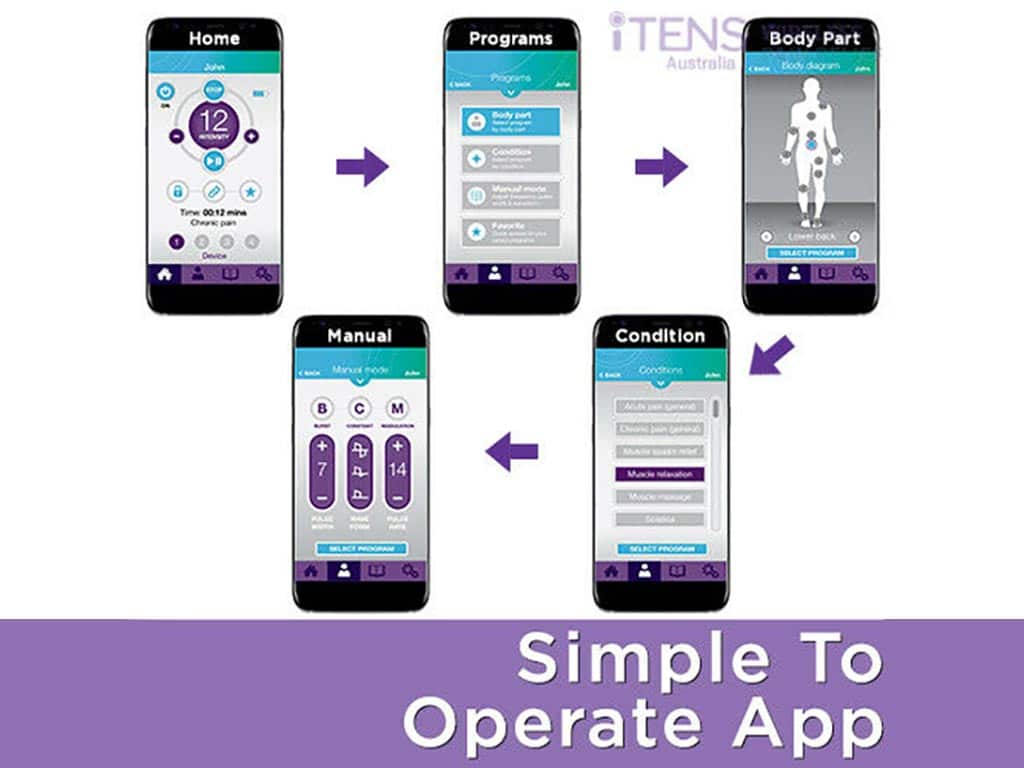
Transcutaneous Electrical Nerve Stimulation (TENS) is a non-invasive and drug-free method of relieving pain. It works by blocking pain signals from reaching the brain and triggering the release of natural painkillers called endorphins. Additionally, TENS helps to boost blood circulation in the affected area, promoting healing. To use TENS for elbow pain, start by cleaning the treatment area. Then, place the electrodes on the skin near the elbow. Turn on the TENS unit and adjust the settings.
Many people rely on pain medication to treat the different causes of elbow pain. However, these can have numerous negative side effects. Fortunately, TENS therapy is available as a method of pain management. It helps with various acute and chronic pain conditions. It is also easy to self-administer. Nevertheless, users must consult a healthcare professional before using one. This article will present how TENS therapy for elbow pain works, including its proper usage and pad placement.
How Does TENS for Elbow Pain Work?
Elbow pain, such as tennis elbow, is a common condition that can cause discomfort and affect daily activities. Its common risk factors include repetitive handling of heavy loads, forearm rotating motions, and strong gripping force. The duration of symptoms and intensity of elbow pain can vary from mild to severe, impacting the function of the forearm muscles and joint movement.
TENS for elbow pain works by using electrical impulses to block pain signals from reaching the brain. This can provide temporary relief and promote functional improvement. The electrical stimulation from the TENS unit can help to disrupt the transmission of pain messages, reducing the sensation of pain in the affected area.
In addition, TENS can stimulate the production of endorphins, which are the natural painkillers of the body. This can help to alleviate discomfort and promote a greater range of motion in the elbow joint. Furthermore, TENS can boost blood circulation in the affected area. It helps to reduce inflammation, relax the muscles, and promote faster recovery of damaged tissues and nerve regeneration.
Benefits of TENS Therapy
- TENS therapy is non-invasive, meaning it does not require any surgery or injections.
- It is drug-free, providing effective pain relief without the need for medication.
- It provides targeted pain relief, providing more direct and concentrated treatment allocation.
- The settings of TENS therapy are customisable. They allow users to adjust the intensity and frequency of the electrical pulses to best suit their needs.
- TENS therapy can help with various acute or chronic pain conditions aside from elbow pain. These include musculoskeletal pain, neuropathic pain, and visceral pain.
- People can use TENS alongside other treatment methods, including physical therapy, manual therapy, and ice and cold packs.

How to Conduct TENS for Elbow Pain
TENS is an effective form of analgesia through electric stimulation. When using TENS for elbow pain, it is important to identify the treatment area. This is usually around the elbow joint. Then, place the electrodes on the muscles near the elbow while avoiding placing them directly over bony bumps.
Next, adjust the TENS machine settings, such as pulse duration, amplitude, and rate. It is advisable to start with a low setting and gradually increase it to a comfortable level. Constantly check for signs of skin irritation. Alternatively, the operator may select pre-set modes. These are tailored for different body parts and conditions and do not require manual adjustments, making the session more convenient.
The usual period or duration of a TENS session for elbow pain can vary, but a typical starting point is around 20-30 minutes. It is important to seek medical advice from a medical professional. This is because there may be additional effects or adverse effects to consider, especially if the pain is related to a spinal cord or nerve issue.
Finding the Right Intensity Level
Intensity refers to the strength or power of the electrical impulses. It is the level of stimulation that the TENS unit delivers to the nerves in the affected area. The intensity can be adjusted to a level that is comfortable for the user while still providing effective pain relief.
To find the right intensity, the user should start at a low level and gradually increase it. The intensity should be strong enough to provide pain relief but not so strong that it causes discomfort. It is important to remember that the tolerance for electrical stimulation can vary from person to person.

Proper Pad Placement When Conducting TENS for Elbow Pain
Before placing the pads, it is important to start with proper skin preparation. The area where the electrodes will be placed should be clean and dry to ensure good contact and effective treatment. This may involve gently cleansing the skin with soap and water and drying it thoroughly.
For elbow pain, the ideal placements are above and below the elbow joint. They may also place the electrode patches on the arm. However, it is vital to remember to place the pads at least one inch apart to prevent interference. Moreover, focusing on one area per session is ideal to maximise the effects of TENS therapy.
Over time, the adhesion of the pads may dry out due to previous treatment sessions. If the adhesion becomes less effective, replacing them with new ones may be necessary for continued effective treatment. It is also important to regularly check the skin for any dermatological conditions or irritation. Consulting with a physical therapist or health care professional for guidance can help ensure that TENS for elbow pain provides long-term relief, ensuring that people can continue with their usual activities.
Wireless Electrodes for Increased Mobility
The wireless electrodes provide on-demand pain relief. They are more portable and mobile compared to bulkier and wired models. They allow users to move around freely, making it more convenient for those who are on the go.
In addition, they eliminate the restriction of movement caused by wires. This is especially beneficial for individuals engaging in physical activities, as it allows for a full range of motion. This feature proves to be essential for those needing pain relief for activity-induced pain. It enables the use of the electrodes while still being able to engage in movements to target specific extensor muscles.
Conclusion
In conclusion, TENS therapy offers relief by using electrical impulses to block pain signals and stimulate endorphin release. To conduct TENS for elbow pain, one should place electrodes near the elbow, adjust settings carefully, and start with a low intensity. Sessions typically last around 20-30 minutes. TENS can be a beneficial part of managing elbow pain conditions, such as tennis elbow, but consultation with a healthcare professional is recommended for safe and effective use.
Proper placement of pads is crucial for effective treatment. Ensuring clean, dry skin and placing the pads at least one inch apart above and below the elbow joint optimises therapy. Regularly checking skin condition and replacing pads when needed maintains effectiveness. Wireless electrodes offer increased mobility, allowing users to move freely and engage in activities without wire restrictions. This accessibility enhances pain relief, promoting active lifestyles. Individuals interested in wireless TENS devices may check the iTENS from iTENS Australia.







